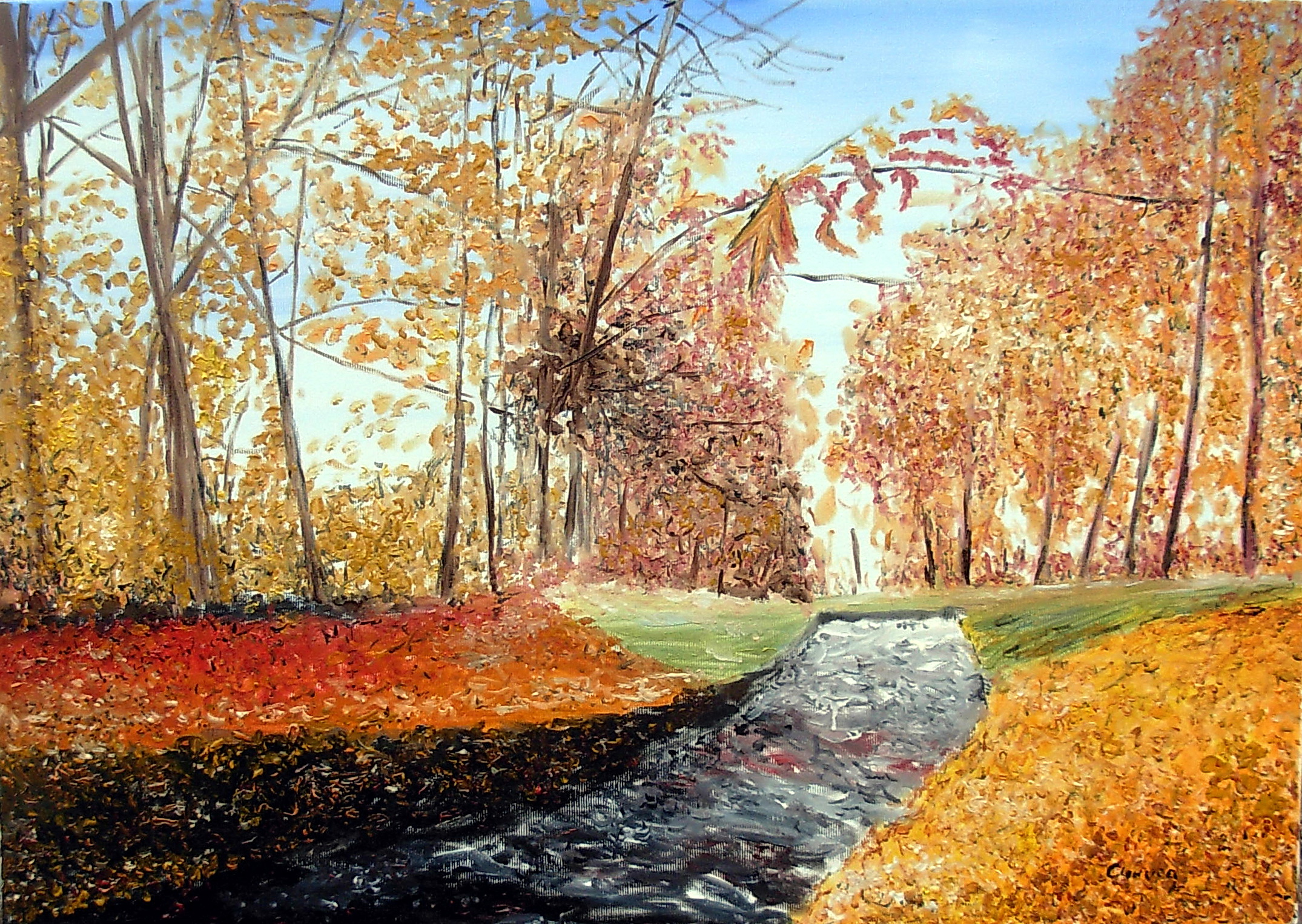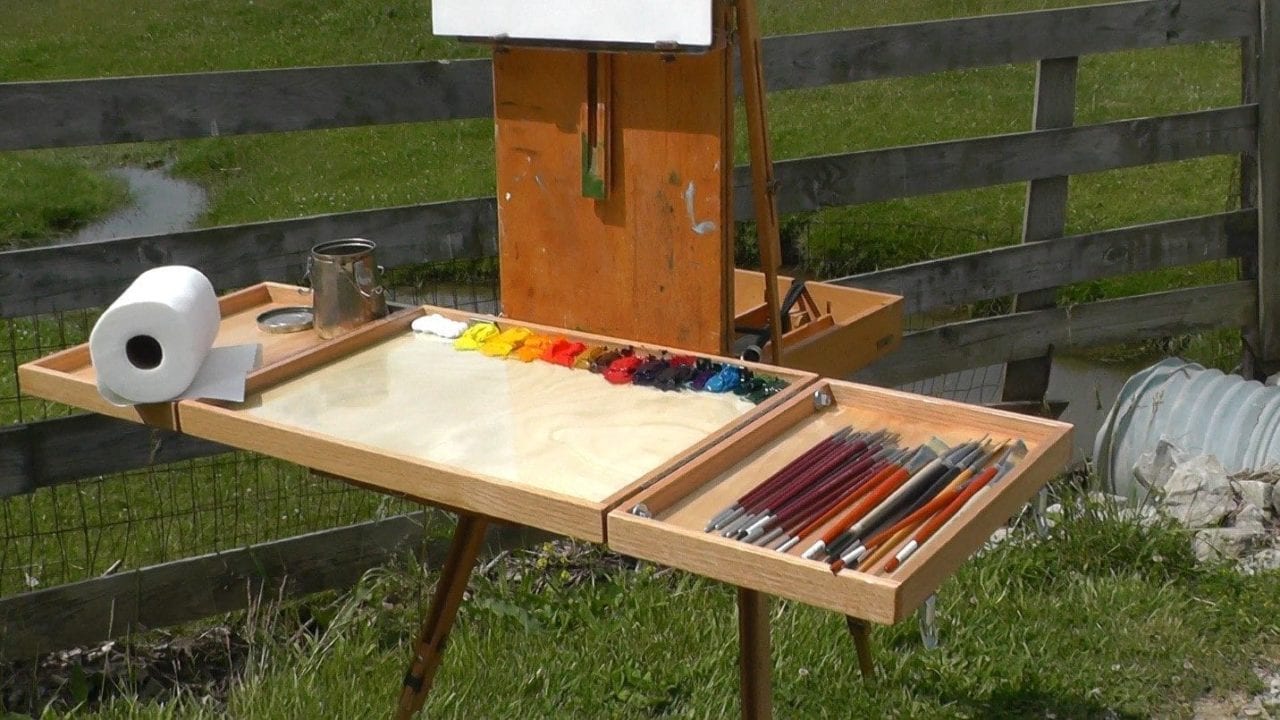Some people know early on in their lives that they wish to be an artist; others find their passion as they grow up. In either case, there is an internal drive in their development as artists.
While there are never any hard-and-fast rules when it comes to a creative career, and there are undoubtedly a thousand different ways to “make it,” below, landscape painter Albert Serino offers up some guidelines that have helped him along the way.

Create something everyday
According to most artists, including Albert Serino, it’s 99% perspiration and 1% inspiration. Always carry a sketchbook with you wherever you go, and draw as often as you can. Regardless of your preferred medium, the humble pencil will help you through every creative block, as well as every burst of inspiration. Establish a routine for your week that encourages you to continue your artistic practice even if you are not feeling up to it. There is no guarantee of success as a self-employed individual and motivation can often be a challenge. However, amazing things can happen when you stop putting too much pressure on every mark to look ‘good’. When you look back through old sketchbooks, you might be surprised by what you find, and perhaps even find inspiration for new works.
Take art courses
If you’re interested in pursuing art as a career, you might as well be doing it full-time. That means taking classes on a consistent basis. And it doesn’t matter what kind of art you’re interested in—you should take classes in photography, painting, graphic design, and more so you have a wide variety of skill sets. You don’t have to take art courses exclusively either; you can also take classes on business, marketing, and other related fields. Whatever you choose to study, it’s important to view it as an investment in yourself. You’re training your brain to think like an artist—it’s only fair you give your brain some time to rest and grow.
Prepare for rejection
One of the scariest parts of pursuing a dream as an artist is the idea of rejection. It’s easy to become discouraged when you don’t get that first agent call or sell your first piece of art. The thing is, you can’t control any of that. You can’t make people like your art, and you can’t make people buy your art.
What you can control is how you respond to those things when they happen. When you’re rejected, don’t berate yourself. Don’t get defensive. Don’t be too strict with yourself. None of that helps. It only makes you feel worse. What you need to do instead is take a step back and ask yourself a few questions, explains American painter Albert Serino. What did the person who rejected you want from you? What do they see in your art that they like? Why did they say no? By keeping those questions in mind when you’re disappointed in the rejection, you stand a better chance of responding in a way that helps you move forward.
Network and be really friendly
If you want to stand out in the art industry, you have to make yourself memorable. One of the simplest ways to do that is to make friends in the art community. There’s a good chance you already know a few people who also consider themselves artists—why not make an effort to connect with them? Make an effort to go to art openings and exhibitions and meetups. Attend art-related social events. If nothing else, the creative community is full of some of the friendliest, most interesting people you’ll ever meet. The more you put yourself out there, the easier it’ll be to make connections and build those relationships. Be friendly and approachable, and you’ll find that people gravitate towards you. You may even find someone who can recommend you for a job or offer to help you with your art.
Don’t give up after the first failure
If you’re serious about pursuing a career as an artist, you’re going to fail. Really, really fail. Keep that in mind when you’re trying things for the first time. If you’ve never done something like this before, odds are it won’t go well. Paint a piece. Try a photography project. Write a song. Take the art class your friend told you to take. Don’t be afraid to fail because you don’t know how to do something. The best artists fail a lot, and the worst artists never fail at all. The only thing you have to fear is fear itself. So, whatever you’re trying to do, don’t let fear stop you.
Be patient
The most important thing to remember when you’re pursuing a career as an artist is patience. The art world moves at a snail’s pace. You can spend months trying to get a single project off the ground, only to have it fall flat on its face. Keep believing in yourself even when no one else does, and don’t let that first rejection hold you back. It’s going to happen. It’s just a matter of when. You’ve got this, artist. You can do this.

